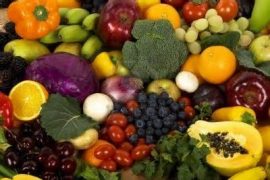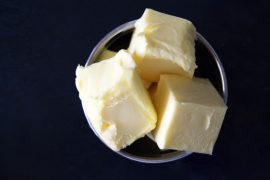Among the vast array of teas from all over the world, matcha is perhaps the most interesting. It is the only tea that comes as a powder rather than loose leaf or in bags. Not only is it celebrated culturally in China and Japan, it also packs a huge health punch. Here’s everything you need to know about matcha and how to use it in some delicious drinks and dishes.
Matcha’s Special Status
Tea experts will tell you that there are just four types of tea: white, black, green, and oolong, and they all come from the Camellia sinensis plant. The differences in tea beyond these categories has to do with how they are processed.
Matcha is a type of green tea made using a unique process from leaf to cup. It also enjoys a special cultural significance in Japanese tea ceremonies.
The powdered tea dates back to the 10th century, when Zen Buddhists made drinking the beverage a part of their meditative ritual. They found that the tea brought them a sense of clarity, focus, and energy, and a feeling of well-being. Although the tea originates in China, Japan popularized the matcha tea ceremony. People still drink matcha today for those same reasons.
Matcha is made from leaves from shade-grown tea plants that are covered to prevent exposure to direct sunlight several weeks before harvest to slow their growth. This stimulates an increase in chlorophyll levels, making the leaves a deep, dark green. Only the finest tea buds are handpicked and laid flat to dry. The stems and veins are removed and the leaves are then ground to form the bright green powder. The highest grades of matcha are sweet and deep in flavor.
The traditional preparation involves dissolving the powdery matcha in hot water with a small bamboo whisk until frothy. The tea can be bitter, so Japanese tea ceremonies usually include a small sweet to be eaten before drinking the tea. The ceremony in itself is very meditative to watch.
Health Benefits of Matcha
Matcha has the amazing ability to stimulate and calm at the same time.
It’s packed with antioxidants – more than any other source (such as raw fruit and green veggies). Antioxidants help to neutralize “free radicals,” but what does that mean? Free radicals are essentially the reactive elements of the air we breathe that can break down proteins, molecules, and even our genes. We need the right balance of antioxidants to prevent too much of this breakdown. That’s why matcha is so good for combating all sorts of damage to our bodies. It boosts healthy skin, supports a stronger immune system, increases metabolism, and helps fight off a whole host of degenerative diseases such as diabetes, cancer, and even dementia. And the effects aren’t small. Matcha contains over 100 times more epigallocatechin gallate (EGCG) – one of the most beneficial antioxidants for fighting cancer – than others teas.
So how does matcha create that feeling of being awake but calm? That’s L-theanine, an amino acid that promotes the production of alpha waves in the brain, which lead to relaxation without drowsiness. L-theanine also plays a key role in the production of dopamine and serotonin, which enhance mood, improve memory, and boost concentration.
If all that isn’t enough, matcha also produces a longer, more sustained level of energy than other stimulants like coffee and energy drinks. Because of all the other complex nutrients in matcha, the caffeine forms molecular bonds that result in a slow release of the caffeine, so you won’t experience the same spike and crash or jitters that you can get with coffee.
Matcha Recipes
Matcha is incredibly versatile as an addition to drinks and dishes. It works just as well as a tea as it does in smoothies, meals, and even desserts. Here are some delicious and nutritious recipes to try.
1. Matcha Smoothie With Peaches
Recipe by Jessica Gavin
Ingredients:
- 2 ½ cups frozen peaches
- 1 banana, sliced
- 1 cup packed baby spinach
- ¼ cup pistachios, shelled and roasted (salted are okay)
- 2 teaspoons matcha green tea powder
- ½ teaspoon vanilla extract (optional)
- 1 cup unsweetened coconut milk
Add all ingredients to a blender and blend for 90 seconds or until smooth and creamy.
Pro Tip: You can add more matcha to taste (up to 6 teaspoons recommended), and add vanilla extract for a little extra sweetness.
Health benefits: This recipe is very high in vitamins A and C, potassium, and dietary fiber.
2. Matcha Yogurt Breakfast Bowl
Recipe by Kellie Anderson
Ingredients:
- ¾ cup Greek yogurt
- 1 teaspoon matcha
- honey or maple syrup to taste
- 1 blood orange or other orange, peeled and sliced
- palmful of walnuts, pecans, or almonds, chopped
Instructions:
- Add yogurt to a mixing bowl, sprinkle or sift in the matcha, and drizzle with honey or maple syrup. Whisk yogurt mixture thoroughly.
- Pour yogurt mixture into a serving bowl and top with sliced blood oranges, crumbled nuts, or your preferred toppings.
3. Matcha Truffles
Recipe by Oh, How Civilized
Ingredients:
- 10 oz white chocolate
- 3/4 cup heavy cream
- ¾ teaspoon matcha, plus more for coating, sifted
- 1/8 teaspoon salt
- 2 tablespoons unsalted butter
- 2 teaspoons hot water (if needed)
- freeze-dried raspberries
Instructions:
- Warm the heavy cream and butter on low heat in a saucepan, just until butter melts. Add a sprinkle of salt.
- Sift matcha into a bowl, then slowly add the warm cream mixture. Whisk until smooth then set aside.
- Chop white chocolate and put into a large stainless steel or glass bowl. Boil 4 cups of water in a pot. When the water comes to a boil, turn off the heat and place the bowl of chocolate on top of the pot. Stir occasionally with a spatula as it melts.
- Pour chocolate into the matcha cream and mix well.
- If the chocolate starts to separate or look grainy, add a tablespoon or two of hot water and stir.
- Pour the ganache into a plastic bag. Pipe the mixture into a silicone ice cube tray and scrape the top with a butter knife or flat edge for an even surface. Refrigerate for 4-5 hours.
- Gently remove the cubes from the tray. Dip each truffle in a light coating of matcha. Crumble freeze-dried raspberries to sprinkle on top for a pop of color.
Matcha, long cherished in Japan, is becoming increasingly popular in the West. With an assortment of health benefits and a more sustainable slow release of caffeine, it is quickly becoming the health and energy booster of choice over products such as coffee and energy drinks. Though it can be pricey, you only need a teaspoon or two per serving, so it’s worth it!
 About the author:
About the author:
Nicola is passionate about travel, food, digital media, and psychology. An award-winning writer and communication consultant, she is owner and principal of Think Forward Communication and Editor-in-chief at Anew Traveller
Reprinted with permission from our friends at fix.com/blog











